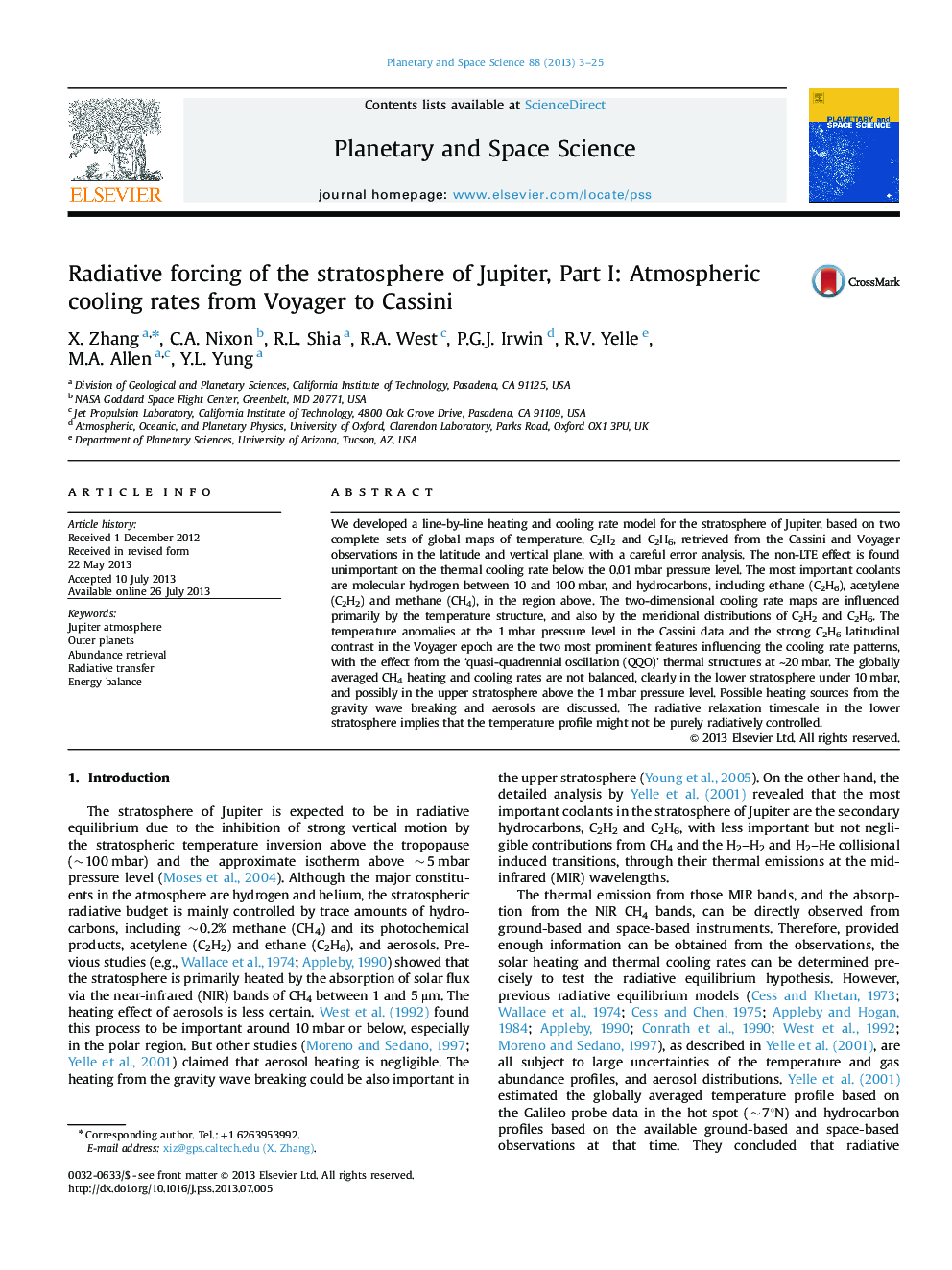| Article ID | Journal | Published Year | Pages | File Type |
|---|---|---|---|---|
| 1781284 | Planetary and Space Science | 2013 | 23 Pages |
•Stratospheric maps are retrieved from the Cassini and Voyager observations.•A line-by-line heating and cooling rate model is developed.•The globally averaged gas heating and cooling rates are not balanced.•The radiative relaxation timescale is different from previous calculations.
We developed a line-by-line heating and cooling rate model for the stratosphere of Jupiter, based on two complete sets of global maps of temperature, C2H2 and C2H6, retrieved from the Cassini and Voyager observations in the latitude and vertical plane, with a careful error analysis. The non-LTE effect is found unimportant on the thermal cooling rate below the 0.01 mbar pressure level. The most important coolants are molecular hydrogen between 10 and 100 mbar, and hydrocarbons, including ethane (C2H6), acetylene (C2H2) and methane (CH4), in the region above. The two-dimensional cooling rate maps are influenced primarily by the temperature structure, and also by the meridional distributions of C2H2 and C2H6. The temperature anomalies at the 1 mbar pressure level in the Cassini data and the strong C2H6 latitudinal contrast in the Voyager epoch are the two most prominent features influencing the cooling rate patterns, with the effect from the ‘quasi-quadrennial oscillation (QQO)’ thermal structures at ~20 mbar. The globally averaged CH4 heating and cooling rates are not balanced, clearly in the lower stratosphere under 10 mbar, and possibly in the upper stratosphere above the 1 mbar pressure level. Possible heating sources from the gravity wave breaking and aerosols are discussed. The radiative relaxation timescale in the lower stratosphere implies that the temperature profile might not be purely radiatively controlled.
